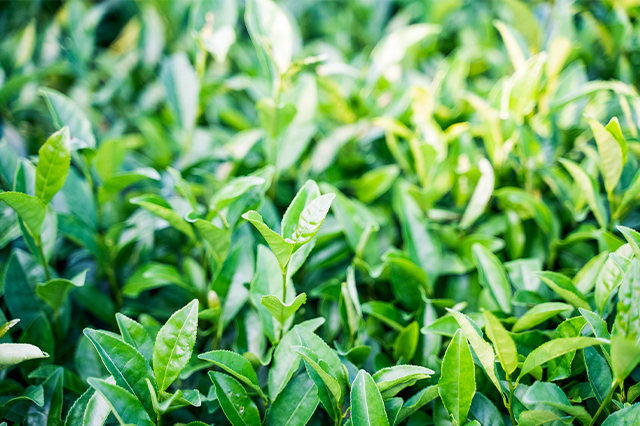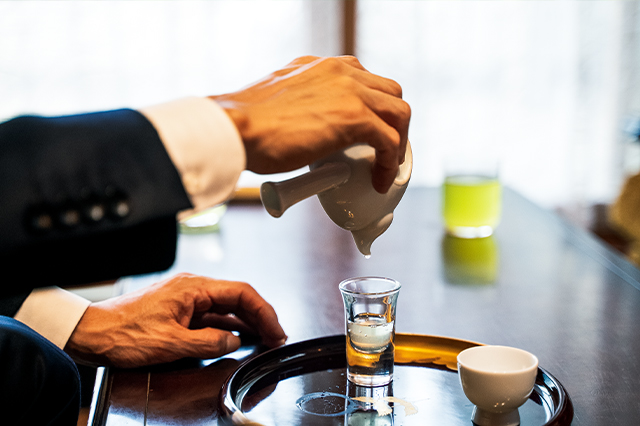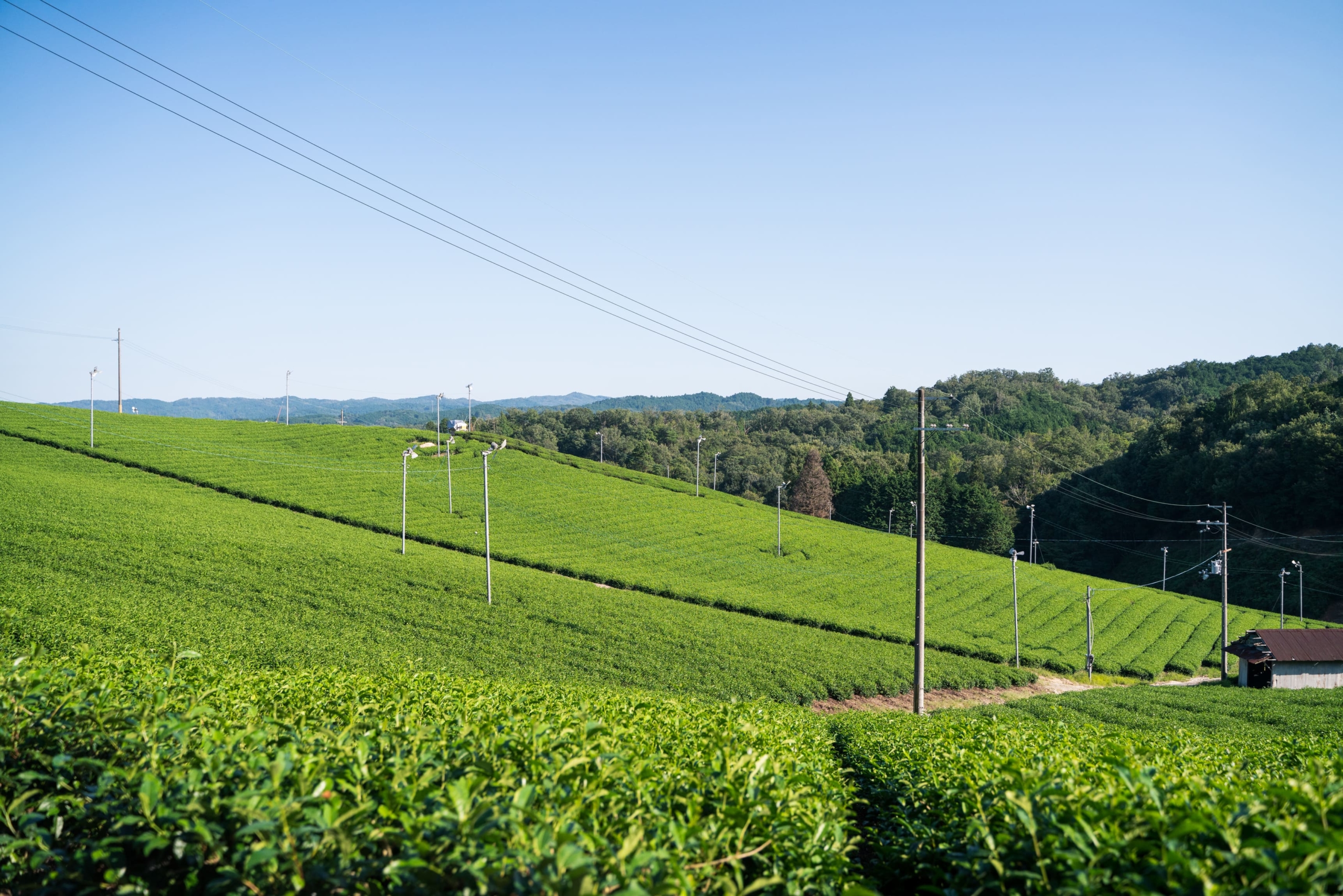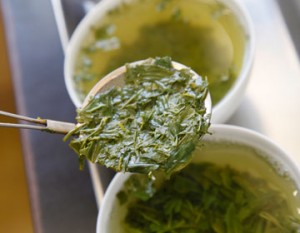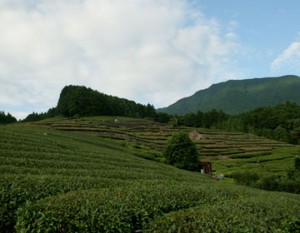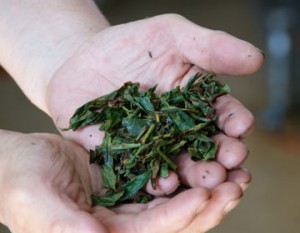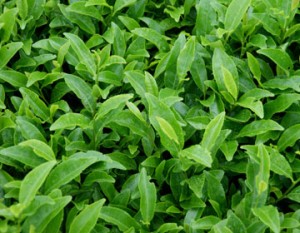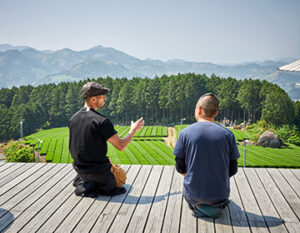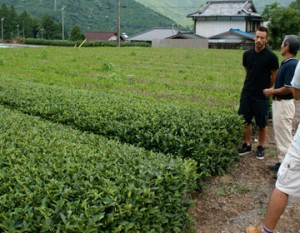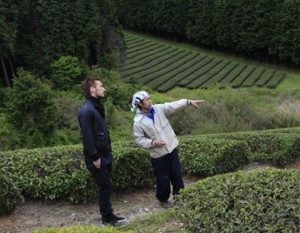Yamato Tea, a nationally renowned tea brand
The history of Yamato tea dates back to 806, when Kobo Daishi brought back tea seeds from Tang Dynasty China, planted them in Uda, Nara Prefecture, and introduced the tea manufacturing method. Later, tea spread to temples, the tea ceremony culture flourished, and tea cultivation became even more prosperous. Yamato tea has now become a nationally renowned brand, and is even served at five-star hotels in Tokyo and in first-class airliners. The Uekubo Tea Farm is located in Momogano, Tsukigase-mura, Nara City, about 30 minutes by car from the city, in the mountains at an altitude of 400 meters. The vast tea fields sloping down from the small mountain are a refreshing contrast to the blue sky. The charm of the tea produced in Tsukigase is that it is sweet and beautifully colored. The tea leaves themselves are beautifully green, and the light green color of the tea itself is also beautiful. The taste is similar to that of gyokuro. These are made possible by the high quality mineral-rich soil, water source, and steep terrain. The tea leaves retain their natural umami and sweetness due to the extreme temperature differences. Early in the morning on sunny, cool days in spring and fall, a sea of clouds spreads over the area, creating a spectacular view. The fantastic sea of clouds provides a natural “cover” for the tea leaves, giving them a flavor similar to gyokuro.
Junichi Kamikubo, the third president of Kamikubo Tea En, received the Minister of Agriculture, Forestry, and Fisheries Award, the highest award at the National Handmade Tea Fair in 2017. He is the first tea master in the Kansai region to be awarded the title of “Tea Saint,” which is given to the winner of this award. Hand-moiling tea is a common practice before the introduction of tea machines, and can be said to be the origin of tea production. Tea making machines have been developed based on this hand-moiling technique, and the machines perform the steaming, rubbing, and drying processes. All processes of hand-kneaded tea are done by hand, and the finished product is as long, thin, glossy, and beautiful as a needle. Compared to machine-made teas, which are broken when they float in hot water, hand-momi-cha is characterized by its ability to return to the original form of tea leaves. This tea is widely acclaimed both in Japan and abroad for its artistic quality.
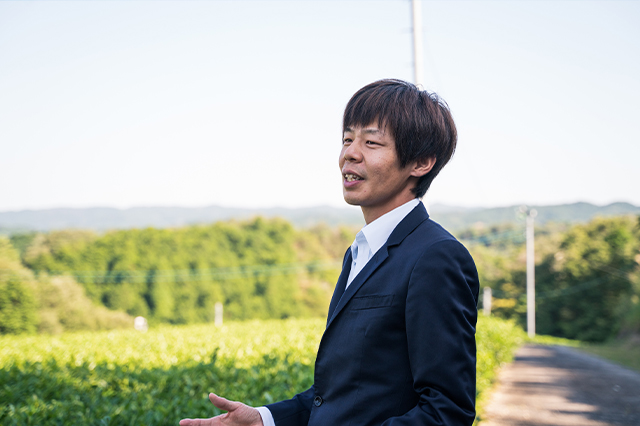
Dreaming of creating a space to touch tea
Mr. Kamikubo did not originally intend to take over his family’s tea business, but he had a strong interest in plants from an early age and wanted to work with plants. He decided to study tea professionally and chose to study at a tea research institute in Shizuoka. There, he met his mentor, who told him that if he was going to spend the rest of his life doing anything, he should acquire the skills to be the best at it and return home, so he decided to study hand-pulling tea. By the end of his two years of study, he was completely absorbed in the world of te-momi tea. The “hand-momi-cha” that Mr. Kamikubo makes depends on a variety of factors, including weather conditions, technique, intuition, his own physical condition on the day, and the growth of the tea leaves. He must be unselfish and not overbearing in his efforts to produce a good product. Otherwise, it is impossible to make a good quality handmade tea.
The process of hand-pulling tea is divided into nine steps. First, carefully selected tea leaves are steamed, and then the steamed tea leaves are handled on a roasting furnace to remove water. Then, the tea leaves are rubbed so as to twist the stems, and gradually kneaded into a tea dumpling with full body strength. Next, the tea leaves are untied one by one and twisted to form a spindle shape. This “firigiri” process is said to be the most difficult. The tea leaves are then rubbed so that they form a wire-like shape. Finally, the tea leaves are shaped and dried.
These processes take six to eight hours, but in Mr. Kamikubo’s hands, the tea is as beautiful as if it were flowing. His artistic technique produces a tea that is as straight and shiny as a needle. Because of the time and effort required to make the tea by hand, even Mr. Kamikubo can only produce 400 grams of tea per year. Tea is a living thing, and so is the person who handles it. It is only a person who can read the heart of the tea leaves, which cannot be read by machines, and it is only because he or she puts his or her heart and soul into it, with the sole intention of delivering a good product to the drinker, that the tea is a gem. Therefore, it cannot be produced in large quantities, but its taste, aroma, and flavor are truly exceptional and can only be produced by hand.
We would like to set up a tea park here, where people can try hand-pulling and tasting tea. We would like to create a tea park here, where people can experience tea by hand and taste the tea. I would be happy if people come here to see, feel, and taste the tea and fall in love with Yamato tea. Mr. Kamikubo smiles as he aims to complete the tea park. I am looking forward to spending a relaxing time with Yamato tea while feeling the scenery and air of Tsukigase.
